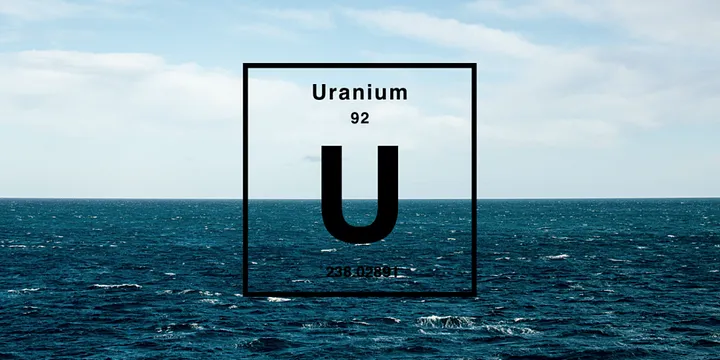Author: Kiersten Sundell

As you may well know, the history of uranium mining isn’t all that ethical.
Consent-based siting is a relatively new concept, brought on in part by the widespread pollution of indigenous lands across the globe. Thankfully, present-day uranium mining operations adhere to strict engineering standards and robust regulatory protocols, meaning that former unethical practices are largely extinct. Although EPA-funded cleanup efforts have been underway since the late 1990’s, the stain of the industry’s shady past remains.
Believe it or not, there may be a future where we’ll never have to mine uranium again. Did you know that it’s possible to source Uranium from seawater?
Seawater is made up of many elements, namely sodium, chlorine, magnesium, sulfate, and calcium, in addition to the obvious hydrogen and oxygen. It also contains trace amounts of Uranium, at a concentration of around 3.3 parts per billion.
This amount is tiny — something like a single grain of salt dissolved in a liter of water. When taking into account the total volume of the world’s oceans, however, it reveals roughly 4.5 billion metric tons of uranium. This much uranium is a 60,000-year supply for nuclear power at present usage rates, which pretty much sets us up for life. Climate change will probably take humankind long before then.
Harvesting the uranium in a way that is both practical and economical is the dilemma.
Scientists have been researching methods for seawater uranium retrieval since the 1960s and have made significant progress. A team of researchers at Stanford University, Oak Ridge National Laboratory, and the Chinese Academy of Sciences are using a polymer material membrane impregnated with a compound called amidoxime, which binds to uranium ions in seawater. The material has tiny vessels like capillaries to trap particles and can absorb up to 20 times more uranium than previous approaches. Other research teams from the University of California Berkeley and the University of Texas Austin are working on different approaches for seawater uranium harvest, which is incredibly exciting.
Of course, this approach requires vast marine infrastructure and a supply chain that doesn’t currently exist. Most uranium-retrieving projects are years away from technological maturity, and many companies have given up entirely due to how much work it would take for such little uranium yield.
With all of this in mind, do YOU think seawater harvesting is a worthwhile investment? Visit our TikTok page to view the full video!


